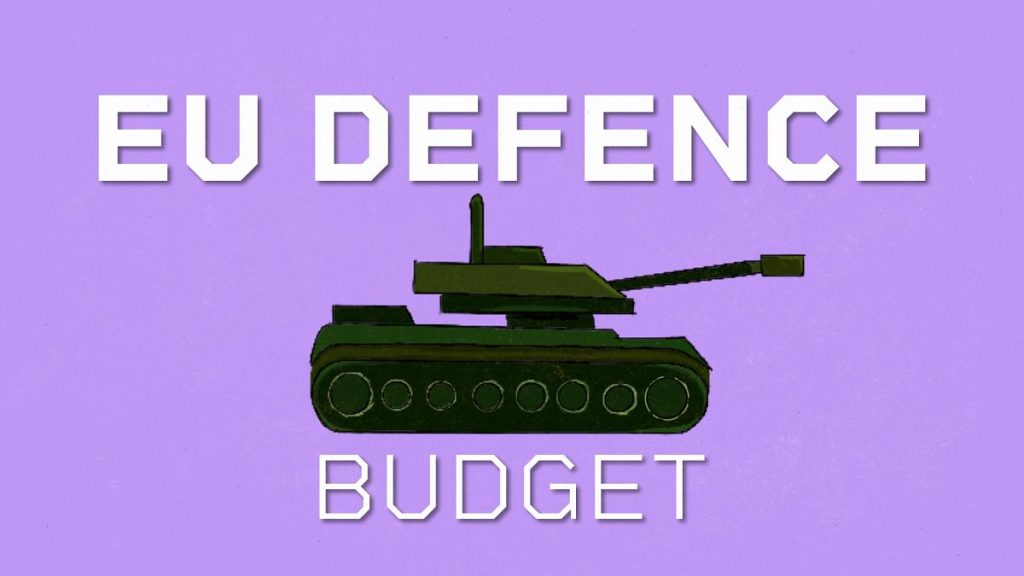The European Union faces a critical juncture in its defense strategy, spurred by Russia’s aggression in Ukraine and increasing pressure from the United States for greater European financial contributions to NATO. While the EU has provided substantial military and logistical aid to Ukraine, the conflict has exposed significant vulnerabilities in the bloc’s capacity to produce ammunition and weaponry. This has prompted a push for increased defense spending, a complex issue fraught with financial, political, and strategic challenges. The European Commission’s proposed €1.5 billion defense program, while a step forward, falls drastically short of the estimated €500 billion investment experts believe is necessary over the next decade. This chasm between need and available resources highlights the core dilemma facing the EU: how to bridge this funding gap and effectively bolster its defense capabilities.
Historically, European defense spending has been primarily handled at the national level, with each member state financing its own military. This decentralized approach has led to inefficiencies and duplication of efforts, prompting calls for greater coordination and resource pooling at the EU level. However, achieving consensus on how to achieve this remains elusive. Several proposals have emerged, including potentially issuing joint debt, similar to the approach taken during the COVID-19 pandemic. However, this idea, reminiscent of “Eurobonds,” faces resistance from fiscally conservative member states who are wary of shared financial burdens. Alternative solutions are being explored, including leveraging private investment, which currently faces significant barriers to entry in the defense sector. The European Investment Bank could potentially play a role in facilitating private sector involvement, but the specifics of such an arrangement remain to be determined.
Public opinion within the EU is also divided on the issue of increased defense spending. While some citizens prioritize defending national borders and advocate reducing aid to Ukraine, others recognize the interconnectedness of European security and the need to support Ukraine as a bulwark against further Russian aggression. This divergence of views underscores the delicate balancing act facing EU leaders: reconciling the imperative for a robust defense posture with the varying priorities and concerns of their constituencies. Ultimately, the success of any increased defense spending initiative hinges on securing public support and demonstrating the tangible benefits of a stronger, more unified European defense.
Adding to the financial pressure is the potential for NATO contribution targets to nearly double, from the current guideline of 2% of GDP to around 3.5%. This proposal, championed by NATO Secretary General Jens Stoltenberg, would require a substantial increase in European defense budgets, potentially reaching an additional €200 billion annually across the EU. While some member states, like Poland, Estonia, Latvia, and Greece, already meet or exceed the 3% target, others, including major economies like Italy and Spain, fall short of even the 2% benchmark. Germany and France, the EU’s leading military powers, have reached the 2% target but would still face significant increases under the proposed new target. This financial burden comes at a time when many European governments are facing tight budgets and competing demands for public resources. Furthermore, legal restrictions and the neutral stance of some member states pose additional constraints on the EU’s ability to directly fund defense initiatives.
The EU’s pursuit of a more autonomous defense strategy also carries the risk of creating friction within the NATO alliance, particularly if key allies like the US and the UK are excluded from new procurement programs. While strengthening the European pillar of NATO is a stated goal, achieving this without undermining transatlantic cooperation requires careful navigation. Finding a balance between fostering European defense capabilities and maintaining a cohesive NATO alliance is a critical challenge for EU policymakers. A more integrated European defense industry could potentially streamline procurement processes and enhance interoperability, but must avoid creating unnecessary duplication or competition with existing NATO structures.
The EU is undertaking unprecedented measures to address the heightened threat of conflict in Europe. The appointment of a dedicated commissioner for the defense industry, Lithuanian Andrius Kubilius, signals a new level of commitment to strengthening the sector. Furthermore, the EU is exploring the possibility of utilizing frozen Russian assets to support Ukraine, a move that could potentially unlock significant resources. However, the legal and political complexities of such an action remain substantial. Ultimately, the EU’s ability to emerge as a credible military power depends on its ability to overcome internal divisions, secure adequate funding, and effectively coordinate its defense efforts with its international partners. The EU faces a complex web of financial, political, and strategic challenges in its quest for a more robust defense posture. Navigating these complexities requires careful consideration of both national and collective interests, public opinion, and the broader geopolitical landscape.

